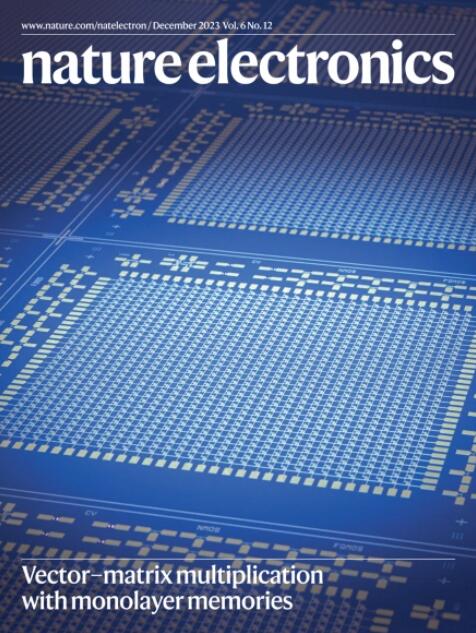Scalable feedback stabilization of quantum light sources on a CMOS chip
IF 40.9
1区 工程技术
Q1 ENGINEERING, ELECTRICAL & ELECTRONIC
引用次数: 0
Abstract
Silicon photonics could soon be used to create the vast numbers of physical qubits needed to achieve useful quantum information processing by leveraging mature complementary metal–oxide–semiconductor (CMOS) manufacturing to miniaturize optical devices for generating and manipulating quantum states of light. However, the development of practical silicon quantum-photonic integrated circuits faces challenges related to high sensitivity to process and temperature variations, free-carrier and self-heating nonlinearities, and thermal crosstalk. These issues have been partially addressed with bulky off-chip electronics, but this sacrifices many benefits of a chip-scale platform. Here we report an electronic–photonic quantum system-on-chip that consists of quantum-correlated photon-pair sources stabilized via on-chip feedback control circuits and is fabricated in a commercial 45-nm CMOS microelectronics foundry. We use non-invasive photocurrent sensing in a tunable microring cavity photon-pair source to actively lock it to a fixed-wavelength pump laser while operating in the quantum regime, enabling large-scale microring-based quantum systems. We also show that these sources maintain stable quantum properties and operate reliably in a practical setting with many adjacent photon-pair sources creating thermal disturbances on the same chip. Such dense integration of electronics and photonics enables implementation and control of quantum-photonic systems at the scale needed to achieve useful quantum information processing with CMOS-fabricated chips. An electronic–photonic quantum system-on-chip—fabricated in a 45-nm complementary metal–oxide–semiconductor microelectronics foundry—provides scalable control of microring resonator quantum photon-pair sources through the monolithic integration of silicon quantum photonics with complex control electronics on the same die.


CMOS芯片上量子光源的可伸缩反馈稳定
利用成熟的互补金属氧化物半导体(CMOS)制造技术,将用于产生和操纵光量子态的光学器件小型化,硅光子学很快就可以用于制造大量物理量子比特,从而实现有用的量子信息处理。然而,实际硅量子光子集成电路的发展面临着与工艺和温度变化的高灵敏度、自由载流子和自热非线性以及热串扰有关的挑战。这些问题已经通过庞大的片外电子设备得到了部分解决,但这牺牲了芯片级平台的许多好处。在这里,我们报告了一个由量子相关光子对源组成的电子-光子量子片上系统,该系统通过片上反馈控制电路稳定,并在商用45纳米CMOS微电子代工厂中制造。我们在可调谐微环腔光子对源中使用非侵入式光电流传感,在量子状态下工作时主动将其锁定在固定波长的泵浦激光上,从而实现基于微环的大规模量子系统。我们还表明,这些源保持稳定的量子特性,并在实际设置中可靠地运行,许多相邻的光子对源在同一芯片上产生热扰动。这种电子学和光子学的密集集成使量子光子系统的实现和控制能够达到用cmos制造的芯片实现有用的量子信息处理所需的规模。
本文章由计算机程序翻译,如有差异,请以英文原文为准。
求助全文
约1分钟内获得全文
求助全文
来源期刊

Nature Electronics
Engineering-Electrical and Electronic Engineering
CiteScore
47.50
自引率
2.30%
发文量
159
期刊介绍:
Nature Electronics is a comprehensive journal that publishes both fundamental and applied research in the field of electronics. It encompasses a wide range of topics, including the study of new phenomena and devices, the design and construction of electronic circuits, and the practical applications of electronics. In addition, the journal explores the commercial and industrial aspects of electronics research.
The primary focus of Nature Electronics is on the development of technology and its potential impact on society. The journal incorporates the contributions of scientists, engineers, and industry professionals, offering a platform for their research findings. Moreover, Nature Electronics provides insightful commentary, thorough reviews, and analysis of the key issues that shape the field, as well as the technologies that are reshaping society.
Like all journals within the prestigious Nature brand, Nature Electronics upholds the highest standards of quality. It maintains a dedicated team of professional editors and follows a fair and rigorous peer-review process. The journal also ensures impeccable copy-editing and production, enabling swift publication. Additionally, Nature Electronics prides itself on its editorial independence, ensuring unbiased and impartial reporting.
In summary, Nature Electronics is a leading journal that publishes cutting-edge research in electronics. With its multidisciplinary approach and commitment to excellence, the journal serves as a valuable resource for scientists, engineers, and industry professionals seeking to stay at the forefront of advancements in the field.
 求助内容:
求助内容: 应助结果提醒方式:
应助结果提醒方式:


